Tu-16: aircraft era. Part III. Under foreign flags in the sky local conflicts
As the popularity of the Tu-16 in the world aviation circles a number of countries have expressed a desire to have this aircraft in their air forces. However, the Soviet government was ready to supply modern technology, especially aviation and missile, only to friendly regimes, as a result of which the export of the sixteenth was limited to supplies to China, Indonesia, Egypt and Iraq.
The first recipient of the Tu-16 was China, which in the mid-fifties became the most powerful and reliable ally of the USSR, not only in the Asian region, but also in the widest geopolitical sense. Beijing at that time seemed to be a more than reliable and promising partner of the Soviet Union, and all possible measures were taken to equip the PRC. Suffice it to recall that it was the Chinese who were transferred to the production technology of nuclear and rocket weapons. The Soviet-Chinese agreement on the creation of aircraft manufacturing enterprises for the production of Tu-16 and IL-28 concluded at the beginning of 1956. And in September, a new one was signed on 1957 - on the transfer of a license for the production of Tu-16 to Beijing. In accordance with this agreement, the People's Republic of China received the required technological documentation, two ready-made Tu-16, as well as a set of separate units and bomber units necessary for the preparation of mass production. The units were sent to the Harbin aircraft factory. Also, a large group of Soviet specialists who were in China until September of 1960 was sent to the enterprise for assistance. The first Chinese car, built from Soviet parts, first flew into the air at the end of September 1959, and was transferred to the Chinese air force early next year. In China, the aircraft was given the name H-6 (Hongzhaji-6 - bomber number 6).
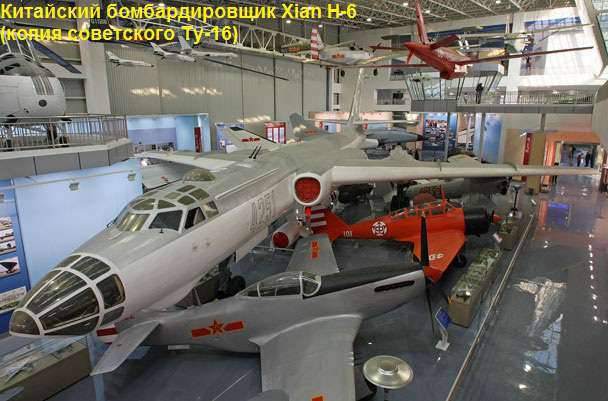
Starting in 1961, the main production of the H-6 was focused on the newly built Xian aircraft factory. It was also the site where the reconstructed bomber assembled from Soviet parts was made into a carrier of a Chinese nuclear bomb, which practically had no differences from our Tu-16A. In mid-May, 1966 from this aircraft, which received the name H-6A, conducted a successful test of the third atomic bomb created in China.
The period of development of the "sixteenth" in China was unusually long, which was primarily caused by the unfolding cultural revolution and the general disorganization of industry caused to it. For example, production of equipment for the start of mass production of the H-6 began only in 1964 year, and the first bomber glider, made of Chinese parts and intended for static tests, was assembled only in 1966 year. The first serial copy of the H-6, entirely made in the People's Republic of China, equipped with the licensed version of the RD-ЗМ-500 (Wopen-8), made its first flight at the end of 1968 of the year. In total, until the end of 1986, in China, the order 120 of H-6 bombers of various modifications was manufactured.
The main aircraft of the Chinese Air Force was the version corresponding to the Soviet Tu-16A. Following the development of the machine in our country, the Chinese also created modifications of the intelligence officer, jammer and aircraft to launch high-altitude targets. To increase the range of action of attack aircraft in the PRC, tankers of the cone-rod system were also created. Since 1970, work has been initiated on the creation of a new integrated navigation bomber system for the bomber with a higher level of automation. The aircraft could use conventional and atomic bombs, and sea mines. Serial production of the new version began in the year 1982.
In 1975, the Chinese began the development of an anti-ship missile system based on the H-6A bomber. The aircraft, which received the name of H-6D, could carry two cruise missiles, and was equipped with a new radar for targeting these missiles. The antenna fairing had an enlarged size and a flat bottom surface. A cruise missile, called the C-601, was created in China on the basis of, obtained from our country, anti-ship missiles P-15. Experienced H-6D made its first flight at the end of the summer 1981 of the year, and by 1982 the rocket carrier made the first launch of the C-601. The complex was adopted in 1985 year.
The Chinese have created on the basis of the H-6 many flying laboratories for testing engines, equipment and various target systems. The latest modification of the H-6 (and, consequently. And Tu-16) was the bomber H-21K created in the century (!). This machine is equipped with economical Russian dual-engine D-6KP-30 engines having thrust in 2 kg (as we remember AM-12500 thrust was 3kg), which allowed to increase the altitude-speed characteristics, flight range and payload. H-9000K can carry six Russian-made X-6 strategic cruise missiles equipped with a nuclear warhead and having a range to 55km. It is worth noting that in domestic aviation these missiles are used from our main and most modern carriers: Tu-2500MS, Tu-95 and Tu-160М22.
The second country that received the Tu-16, became Indonesia. At the beginning of the sixties, relations with this former metropolis, the Netherlands, were extremely aggravated by this state. Indonesia filed claims for the right to own the island of West Irian and, in fact, started an undeclared war there, under the guise of "the fight against colonialism." In response to this, a squadron including the Karel Doorman aircraft carrier was sent from Holland. Jakarta was supported by our country, which sent specialists and weapons. The scale of Soviet military assistance was more than impressive, including the cruiser Pr.68bis Ordzhonikidze provided in the following years, 6 destroyers, Pr. 30bis, 12 submarines, Pr.613, 24 missile and torpedo boats, Pr.183, Tanks and artillery, several air defense divisions, as well as equipment for two marine divisions. Among this wealth were 25 Tu-16KS missile carriers with Soviet crews who arrived on islands far from their homeland in the summer of 1961. From these machines two squadrons were formed - the 41st and 42nd, which were placed at the airport near Jakarta.
The tension in the region was the highest. The situation was compounded by the American threat to support the Dutch with fleet. An English squadron was also approaching Indonesia, ready to "contain the Communists." In response to this, the Soviet Union demonstrated the seriousness of its intentions, supporting Jakarta not only with weapons, but also with the direct participation of aviation and the navy in the conflict. By the summer of 1962, the USSR had deployed a group of four submarines near the Indonesian coast. The order of the Commander-in-Chief of the Navy of the USSR Admiral S. Gorshkov well demonstrates the degree of intensity: “In order to prevent the export (evacuation) of goods and equipment from this territory from 00:00. 5 minutes On August XNUMX, destroy warships and vessels sailing through the area under any flag. Return by special order. Report the results of combat contact upon return. ”
Were in combat readiness and squadron Tu-16. The presence of powerful and modern missile carriers seemed to be one of the strongest "trump cards" in the conflict. The task of “real deterrence” entrusted to them was accomplished brilliantly by these percussion machines. Not having made a single launch, only the presence of the “sixteenths” managed to convince the Netherlands that attempts to resolve the problems by force were unsuccessful. After the return of the Dutch squadron, Soviet personnel flew home, and the planes were transferred to the Indonesians. Unfortunately, in world politics rarely remember the good and store gratitude. Over time, Indonesia changed course and turned away from the Soviet Union. Relations between countries were severed. After that, the Tu-16X stood for some time without spare parts, and then were disposed of. It is worth noting that one of the rocket carriers got into the museum of aviation and military equipment in Jakarta.
In the fall of 1955, deliveries of Soviet weapons to Egypt began. Among other things, 200 combat aircraft were sent to this Arab Republic, among which were IL-30 28 bombers. However, they could not satisfy the ambitions of the Egyptian President Nasser. He demanded a more modern and powerful technique, wanting to surpass the Israeli Air Force by no less than 4 times. In his opinion, Tu-16 bombers looked the most suitable, as the scale of the local theater of operations became a real strategic tool.
The first cars of this type were delivered already in 1962 year. Before the group arrived, they were assigned a combat mission: the Egyptian General Staff demanded bombing of mountain roads near the Yemeni city of San. The point was that in Yemen there was a change of government. A group of "progressive-minded military" in September 1962, the monarchy was overthrown, and a protracted internal conflict began. In those years, Yemen was part of an interstate entity - the United Arab Republic, which consolidated this country with Egypt and Syria. Egypt, who felt like a leader in this bundle, did not want to give in to his interests, and sent an army expeditionary force to Yemen, which also found itself involved in hostilities and needed support. At night, five Tu-16 with mixed Soviet-Egyptian crews took to the air and headed for Yemen. The task was extremely difficult due to the large distance of the targets, which were practically at the maximum range. Therefore, even with full refueling, they returned to their own airdrome with an extremely small amount of fuel. Departures and then made at night, as a joint crew, and independently only Arab. In the future, combat missions interspersed with the training of Egyptian pilots. Combat work was going on until February 1963, when a group of Soviet pilots was recalled home.
In 1963, the missile carriers Tu-16X were transferred to Egypt, where two squadrons were formed. Crews were trained in the USSR, and Soviet specialists took part in the operation. By the beginning of the six-day Arab-Israeli war 1967 of the year, the Egyptian Air Force had a total of thirty different Tu-16 modifications, which were deployed at the Cairo-West air base. Knowing the shock capabilities of the Tupolev machines, the Israelis considered them to be the main threat and regarded as the target number XXUMX. Therefore, already in the first raid on the base, on the morning of June 1, Mirages and Super Misters did everything possible to destroy sixteen bombers on the airfield. It is worth noting that practically all the combat aircraft that were available were involved in the attack of the Arab airfields in Tel Aviv. During the second raid, made in 5 minutes after the first, the Israelis destroyed another 15 machine, and the third wave destroyed the remaining ones. Moreover, the last bomber was rammed by a Hurricane shot down by Egyptian fighters. Some sources claim that the Israeli pilot specifically sent his plane to him. The war ended on Saturday 5 June with a truly devastating score - only the losses of the Arab planes were several times higher than the Israeli ones. The situation in other branches of the military was not much better.
The radical change in the situation in the Middle East was perceived in the USSR extremely painfully. There was a proposal to strike at targets on the territory of Israel with Soviet long-range aircraft. For this purpose, we began to form a group of the Tu-16 Poltava 185 Guards Tbap. The departure was planned to be made from Mozdok (where the strike group's machines flew over) with a flight over the territory of Turkey and landing after striking at airfields in Egypt. All signs of nationality were already washed away from the bombers, and the crews were ordered to hand over the documents. Fortunately, events developed too quickly, and common sense prevailed before the final decision at the highest level. It is worth saying that the operation being prepared did not provide a full guarantee of successful completion: the disabling of Egyptian airfields did not give the possibility of a normal landing of the vehicles.
After the end of the war in the autumn of 1967, the Soviet crews overtook six Tu-16T torpedo bombers to the Cairo-West airfield. Soon the training flights of the Egyptians began under the guidance of our instructors. Among the pilots who flew the Tu-16T was H. Mubarak, the future president of the country. The main task of the squadron was the opening of the intelligence situation in the waters of the Mediterranean and Red Seas. The aircraft monitored the aircraft carrier groups of the American 6 fleet and the ships of the English fleet in the interests of the actions of the 5 squadron of the Soviet Navy deployed in the Mediterranean. The area of operation of the Tupolev scouts stretched from the coast of Greece, Cyprus, reaching Tripoli and Sicily in the west. Intelligence was conducted for a full radius of action, with the duration of the flights often exceeding four hours. As a rule, military interpreters flew in the stern cockpit of the aircraft, who helped conduct radio exchanges with the ground services of Arab airfields and listened to radio communications of the reconnaissance facilities.
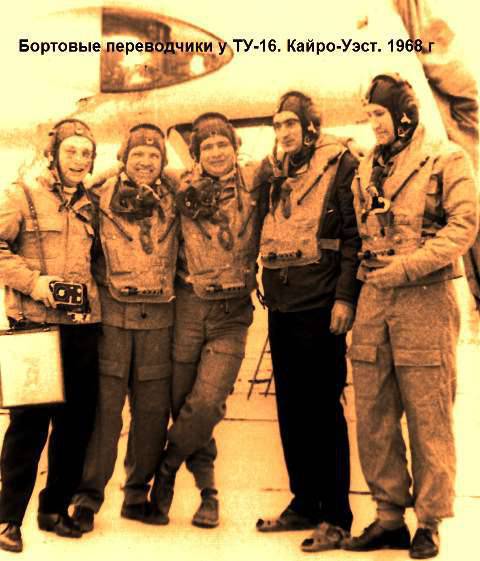
In addition, reconnaissance aircraft performed tasks in the interests of the Egyptian side: they detected ground-based radar stations and jammers in Israel and the Sinai Peninsula. In these flights, the possibility of intercepting Tu-16Р by Israeli fighters was not excluded, therefore the reconnaissance vehicle was covered with MiG-21 fighters from the nearby Beni Suyf airfield.
In most cases, a couple of aircraft took off for reconnaissance, the next couple was in readiness at the aerodrome. In some cases, flights were carried out by the entire squadron. Often, reconnaissance aircraft were accompanied by American and British fighters. In one of these cases, during a night flight to the region of Sicily, Major A. Kadomtsev’s Tu-16Р discovered the aircraft carrier John F. Kennedy. A pair of F-4 “Phantom” that took off from it, got close to the Tu-16Р and one of them touched the keel with the wing of our car. Fortunately, the collision ended only with a crumpled wing tip.
Later, 25 Tu-16 came from the USSR. Among them are Tu-20K-16-11 and Tu-16CR-16 missile carriers, three reconnaissance Tu-2Р and two jammers Tu-16PS. Two squadrons were formed from the arriving vehicles.
By the beginning of the October war 1973, the crews of the Arab Tu-16 were already quite well prepared to perform combat missions. Taking into account the bitter experience of the previous war, this time the Tupolev machines were placed on the airfields south of Sinai, outside the reach of Israeli aircraft. After the start of the war, from 6 to 22 of October, launching cruise missiles DAC-2 and DAC-11 were launched from enemy missile carriers to enemy targets on the Sinai Peninsula. Most articles and monographs citing Israeli sources indicate that 25 missiles were launched. In fact, according to the recollections of the Soviet participants in the conflict, there were no more than a dozen missile launches. Never once begging the high professionalism of the Israeli military, and first of all the pilots, the same exaggeration are the reports on the effectiveness of the Israeli air defense system, which managed to shoot down, for the most part, fighter-interceptors, at least 20 of 10 rockets launched.
What caused these exaggerations, one can only guess; either fear has big eyes, or there have been ordinary postscripts or information warfare. According to some domestic authors, these figures achieved the task of creating an opinion about the capabilities of the air defense system to intercept up to 90% of the launched missiles. Anyway, at least five missiles hit targets. It is worth noting another interesting fact, which also increases the distrust of Israeli sources. Initially, Tel Aviv mentioned only a couple of targets they hit - one radar station and a certain “field depot at Sinai”. Over time, Israel officially recognized substantially more damage from the Tu-16 cruise missiles, which destroyed such military targets as: an air traffic control point in Sharm al-Sheikh, a command post at Refidim airbase, Um-Hashif and 511 base in Sinai. The missiles were launched over the Mediterranean, or over land from Cairo. It is worth noting that such performance of the Egyptian “sixteenths” was achieved by trimmed export modifications of the DAC-2 missiles, equipped with single-channel seeker, practically unprotected from interference. Also, the Arabs actively used reconnaissance Tu-16Р. According to the Egyptian side, the “sixteenth” losses did not occur, while the Israelis claim that they were able to shoot down one plane.
After breaking off military cooperation with Egypt in the spring of 1976, our country stopped supplying spare parts for its equipment. In an effort to preserve the existing fleet of combat aircraft, Egypt turned for help to the PRC. In the middle of the summer of 1977, during the four-day conflict with Libya, the latest use of Egyptian Tu-16 was recorded. In the course of hostilities, Egyptian air forces attacked several Libyan targets, including Tobruk, El Adem and Al-Kufra bases. Most sources claim that the Tu-16 was the raid on the Al-Kufra base, in which two radar stations were destroyed. For Egypt had no other means possessing the necessary range. Only Libya announced two downed missile carriers, but Cairo does not recognize losses. In the early nineties, the Egyptians still had Tu-16 aircraft as part of the 16 air force, but by the beginning of the 21 century they had already been withdrawn from service.
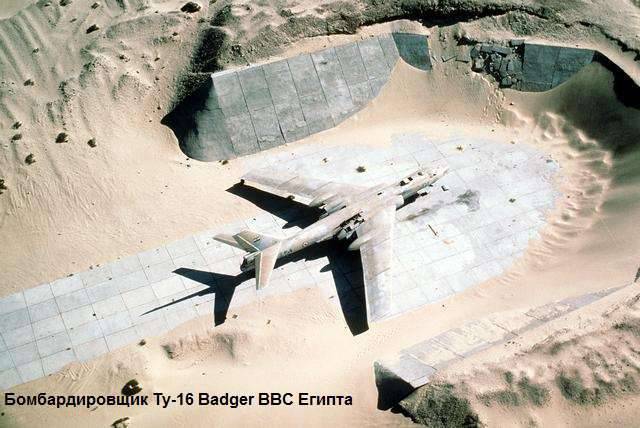
By the start of the six-day war, Iraq had six Tu-16s deployed at the Habbania base. 6 June four cars attempted to strike at Tel Aviv. However, three "sixteenths" were forced to go back because of the problems found. The remaining machine of the squadron commander continued the flight, but she was not lucky either. Instead of the capital of Israel, a poorly trained navigator brought the plane to Netanya, which was tens of kilometers north of the planned target. Dropping bombs on one of the local factories, Tu-16 turned north, heading to the Israeli Ramat-David airbase. Once again, the lack of training has failed the Iraqis. They could not find either the runway or the aircraft standing on it. Having noticed them already at the moment of flight of the arrows of the aft installation, he fired several lines in the direction of the enemy’s airfield. But this misadventure bomber did not end there. Soon he was intercepted by the Mirage and damaged by the K.530 rocket. However, a solid Tupolev machine well withstood the blow and continued to fly. As a result, the plane was finished off by Israeli anti-aircraft gunners with Bofors 40-mm cannon fire. This time, luck accompanied the crew, he survived, although he spent some time in captivity. In the 1973 war of the year, the Iraqi "sixteenths" no longer participated.
In the seventies, Iraq acquired the 8 of missile carriers Tu-16CR-2-11, which, together with the supersonic Tu-22, were consolidated into two bomber squadrons. These vehicles took part in the fight against the rebels in Kurdistan, in 1974 year.
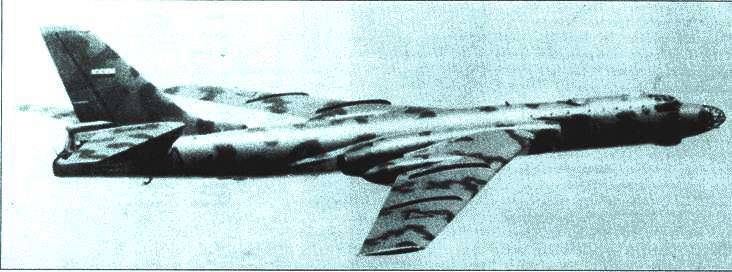
By the beginning of the Iran-Iraq war 1980-88, there were eight Tu-16 in service with Iraq. In the first period of the war, S. Hussein actively used them to strike at Iranian positions and various objects in the enemy rear. In particular, these aircraft hit the Tehran airport, the radar station of the Iranian air defense system and oil infrastructure facilities. With special diligence, the bombers sank tankers, both belonging to Iran and neutral states.
Under Gorbachev, the supply of spare parts was discontinued, and the planes got a joke. Iraq later acquired four H-6D missile carriers with a large number of C-601 missiles in the PRC. Chinese aircraft participated in the final stage of the war, striking Iranian cities and the oil terminal on Fr. Kharg. The planes used both bombs and missiles. By the time the United States and its allies launched an attack on Iraq in 1991, the vast majority of Iraqi Tu-16 did not fly and were destroyed on the ground. However, the aircraft capable of taking off could still escape from the blows.
Sources:
Rigmant V. How was created Tu-16. About the predecessors of the great aircraft // Wings of the Motherland. 2002. No.5. C. 18-25.
Markovskiy V., Prikhodchenko I. The missile carrier Tu-16. The triumph of the Soviet aviation industry. M .: Yauza, 2015. C.174-191.
Rigmant V. Tu-16. Birth of a long-liver // Aviation and cosmonautics. 2002. No.5. C. 20-28.
Gordon E., Kudryavtsev V., Rigmant V. Legendary Tu-16 // Aviation and Time. 2001. No.1. C.4-24.
Gordon E., Kudryavtsev V., Rigmant V. Legendary Tu-16 // Aviation and Time. 2001. No.2. C.4-22.
Yakubovich N., Artemyev A. Tupolev Tu-16. Long-range bomber and missile carrier. M .: AST, 2001. C.12-34, 48-97, 111-122.
- Technical engineer
- Reactive masterpiece SV Ilyushin.
The difficult fate of the Tu-14.
TU-95. From the history of "Russian bear".
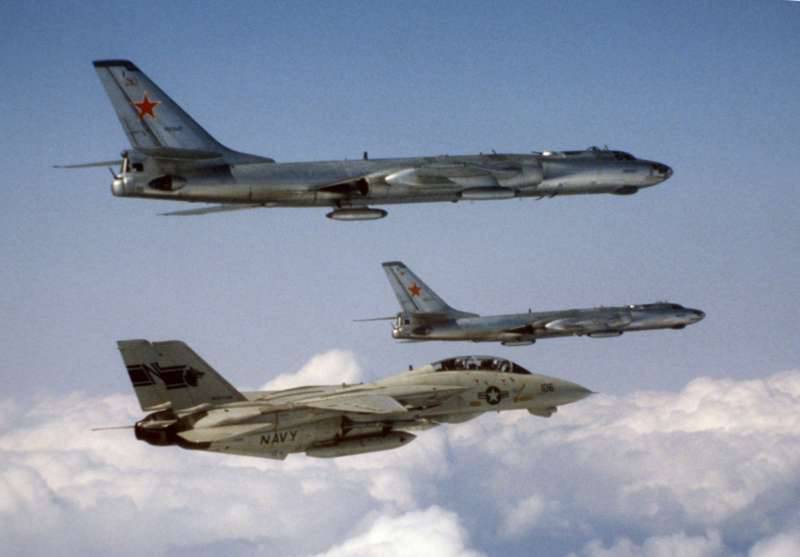
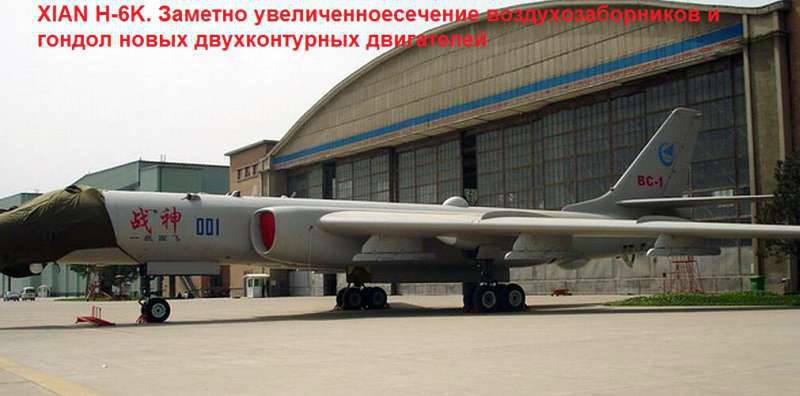
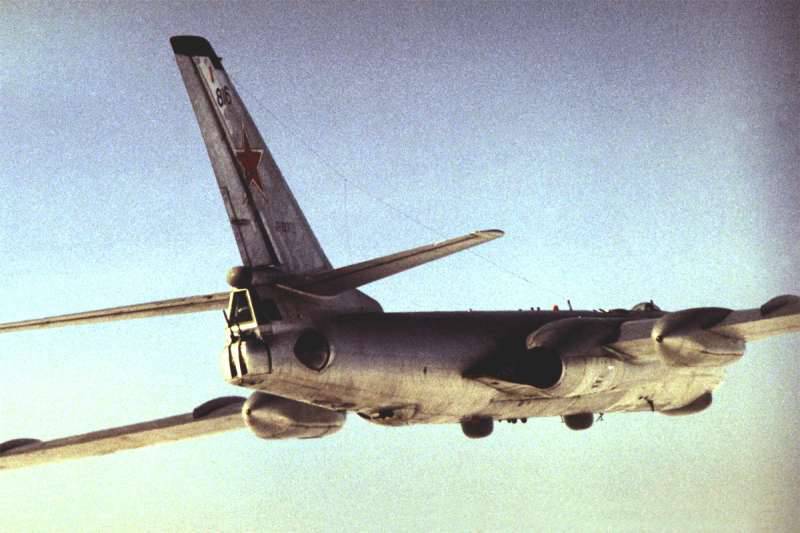

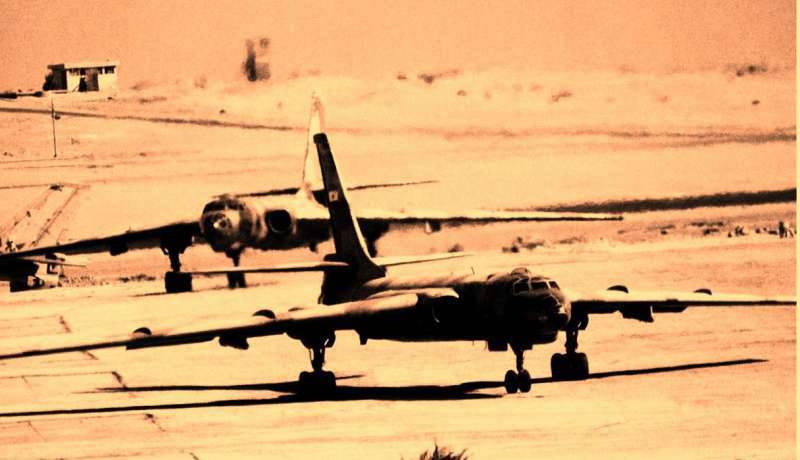
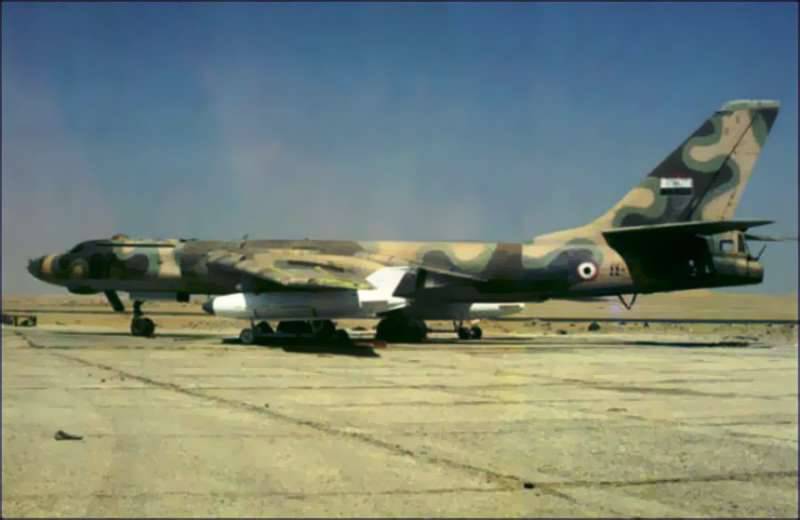
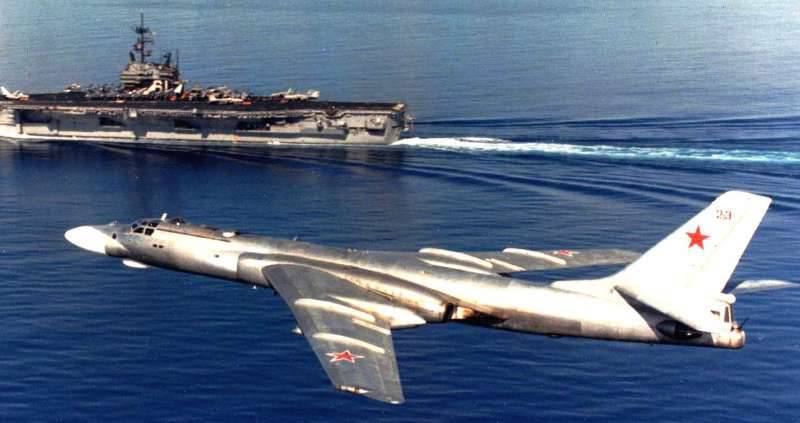
Information